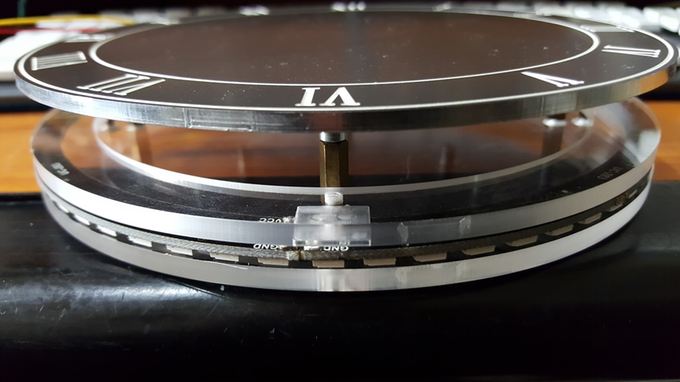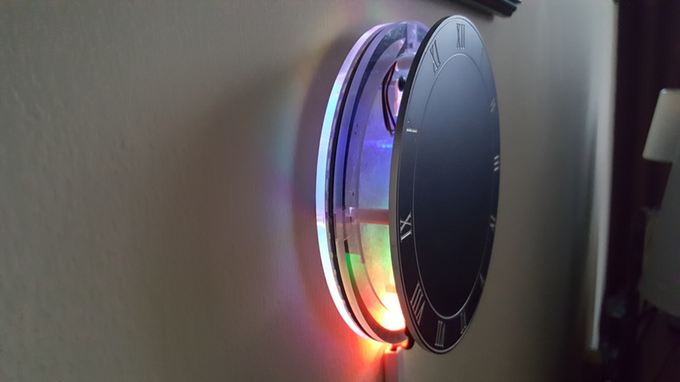The LED Reflection Clock: A DIY Smart Clock

Via hackster.io
Are you already tired of telling what time is it through traditional wall clocks? If you are thinking about replacing it by spending more money on a fancier one, you may think twice after reading this post. We all know how powerful technology can be when it is applied properly. An outdated item can be given a new life after some appropriate makeovers. TechDesign has been regularly featuring maker projects on our blog’s “Raw Tech” section, so today, we want to share another great maker project with you all. Hopefully, it can give you some inspiration about how to replace your old wall clock.
A shiny addition to your home
David McLaughlin didn’t just come up with this project idea out of the blue. He came across it on a friend’s blog and decided that it could be interesting to build a smart clock from Particle Core module and update the time through Internet. What’s the immediate benefit that he thought of? He no longer has to take the clock down from the wall whenever he wants to update the time.

He decided to go with Schaeffer-Ag and designed an LED panel with Front Panel Designer. The front of the clock is made of aluminum anodized black and behind it are 2 transparent perspex panels that keep the LEDs in between. To create a large enough reflection area for the clock, McLaughlin kept a 10mm space between the clock and the wall.

As for the Particle Core, it is connected to a PCB that is incorporated to the clock. It has a 12V power input and a switching regulator is included to share 5V of the power with the Particle Core. However, McLaughlin shared that a 5V input is enough for this project, as the reason he went for a 12V supply was only because it was readily available for him. If a 5V supply is used, then others won’t have to add a regulator to the clock.

McLaughlin shared a picture of the installed clock and it clearly showed how the extra space in between helps to spread the LED lights on the edge, so the whole lighting effect can be better. If you want to learn more about the project’s detail, check out its complete profile on hackster.io.
However, if making yourself a smart clock through the steps above still seems too complicated, then you can always get a smart clock from Glance, which we wrote about a few months back. If you have other questions or suggestions, please don’t hesitate to send them our way.









